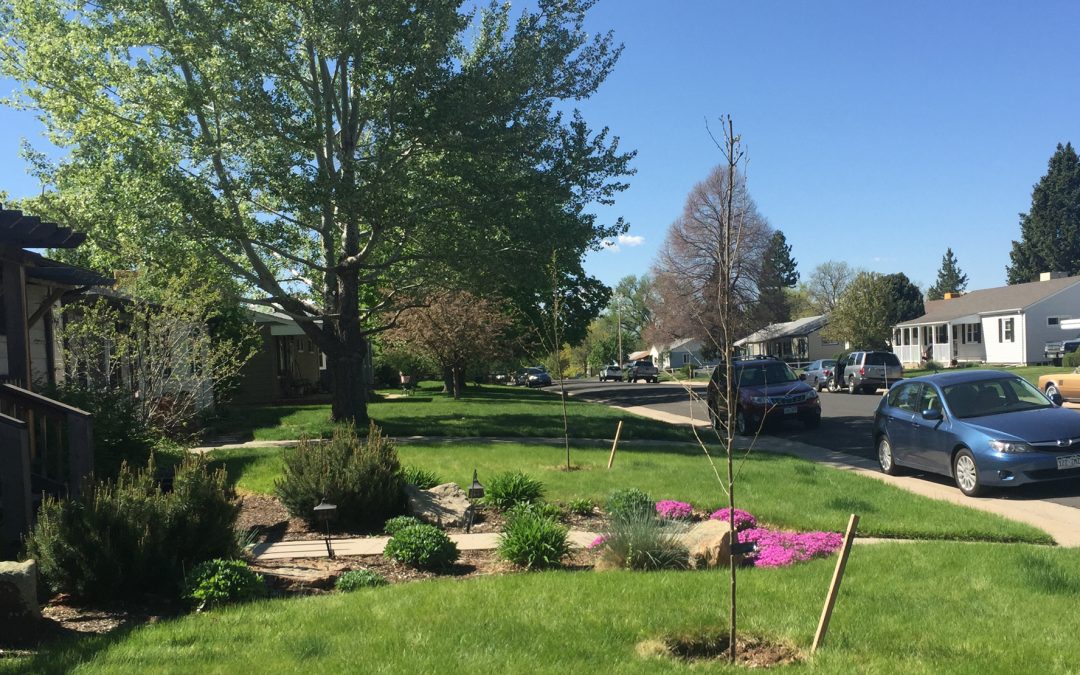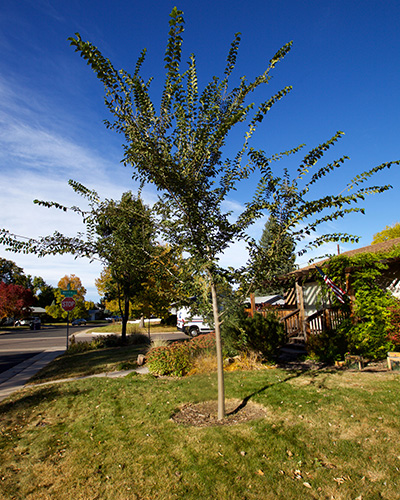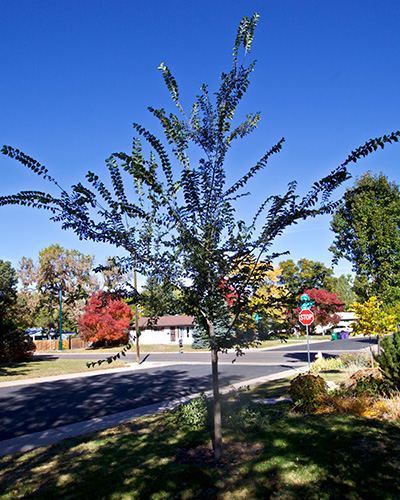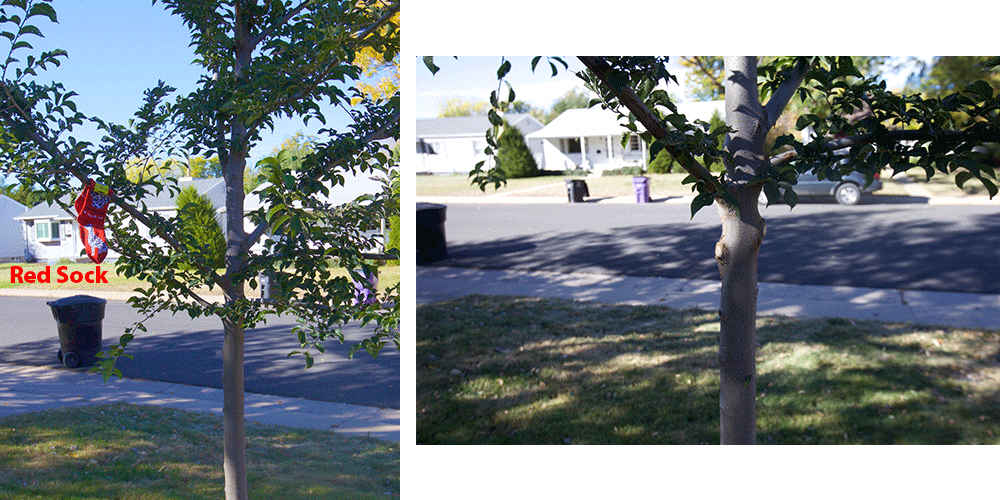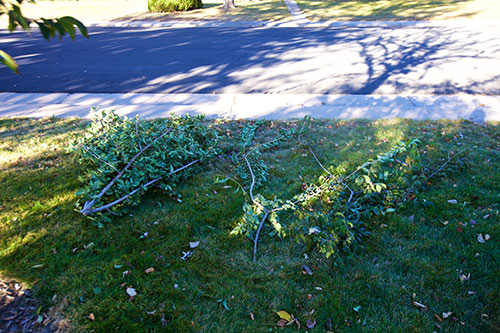Planting Elm Trees
At one time, the American Elm was the most planted tree in America. Elms were popular because of their size and stately fountain-like shape. Trees planted along streets create an entwined canopy that turns gold in the fall. Unfortunately, most American Elms across the U.S. were wiped out by the Dutch Elm Disease (DED) in the 1900s. DED was discovered by Dutch pathologists in the 1920s. Today, American Elms are found in cities with cold and dry climates, like Denver and Minneapolis, but are rarely planted now. Arboriculturists have been busy developing Elm hybrids to take the place of American Elms.
Denver Digs Trees gives homeowners street and yard trees to plant. They offer local trees adapted to Denver’s variable weather and dry climate. Yard trees shade and cool our homes in the summer. They also increase the value of homes, buffer noise, and provide shelter for birds and other wildlife. Street trees beautify Denver’s neighborhoods, reduce traffic noise, and improve air quality. To sign up for a tree in 2020, check out Denver Dig Tree’s website.
I planted two Patriot Elms from Denver Digs Trees this year to provide shade from the hot western sun. The Patriot is a cross between the Urban and Wilson Elms and is resistant to DED. Denver Digs Trees recommends this tree because it grows fast and is easily established. Ross Tree mentioned that Patriot Elms are prone to the American Elm Scale, which sucks the energy out of the trees and produces honeydew. For more information about treating American Elm Scale and other tree pests, please check out our Tree Insect Calendar. The Japanese Beetle is listed on the calendar. The Japanese Beetle attacked the trees late this summer. Ross Tree recommended using soil drenches in May to ward off Japanese Beetles.
Year Four Update
The sapling planted on the north side of the front yard did not survive an early spring polar plunge in 2020. We replaced it last year with a Kentucky Coffee Tree. The Elm on the south side has flourished and now is over 20 feet tall with a four-inch trunk. No American Elm Scale has yet been seen, but we apply ground systemics each year to fend off Japanese Beetles.
The four-year-old sapling has become unruly, with competing domain leaders and low branches. A snowstorm last year bent the tree to the ground. Surprisingly, the tree trunk did not break. We decided to thin the crown to one dominant leader to make the tree less susceptible to Denver’s early spring and late fall snowstorms.
Reduction Cutting of Competing Leaders
In early 2023, we pruned back three competing leaders, hoping it would slow their growth. In the fall, we noticed that the leaders still competed with the selected leader. We decided to structure prune the young tree following the steps mentioned in the Ross Tree blog titled, “Winter Care of Young Trees in Denver.” First, we cut off the branch that supported the three competing leaders, as shown in the picture below. The crown is much more open, allowing a central branch to become the dominant leader for the young Elm tree.
Select the Lowest Permanent Branch
We next selected the lowest Permanent branch. It is identified by the red sock below. We pruned off two lower branches.
Pruning Dose
The American National Standards Institute (ANSI) standards state that 25% of a healthy tree’s foliage is the maximum that can be removed each year. We hit 25 percent with this pruning so cutting out temporary branches and creating a radial distribution of scaffold branches will have to wait for next year. We do plan to prune off any suckers and simplify the structure of the longer branches in October.
Please call Ross Tree Company at (303) 871-9121 or click here to fill out a service request form for tree planting today.

